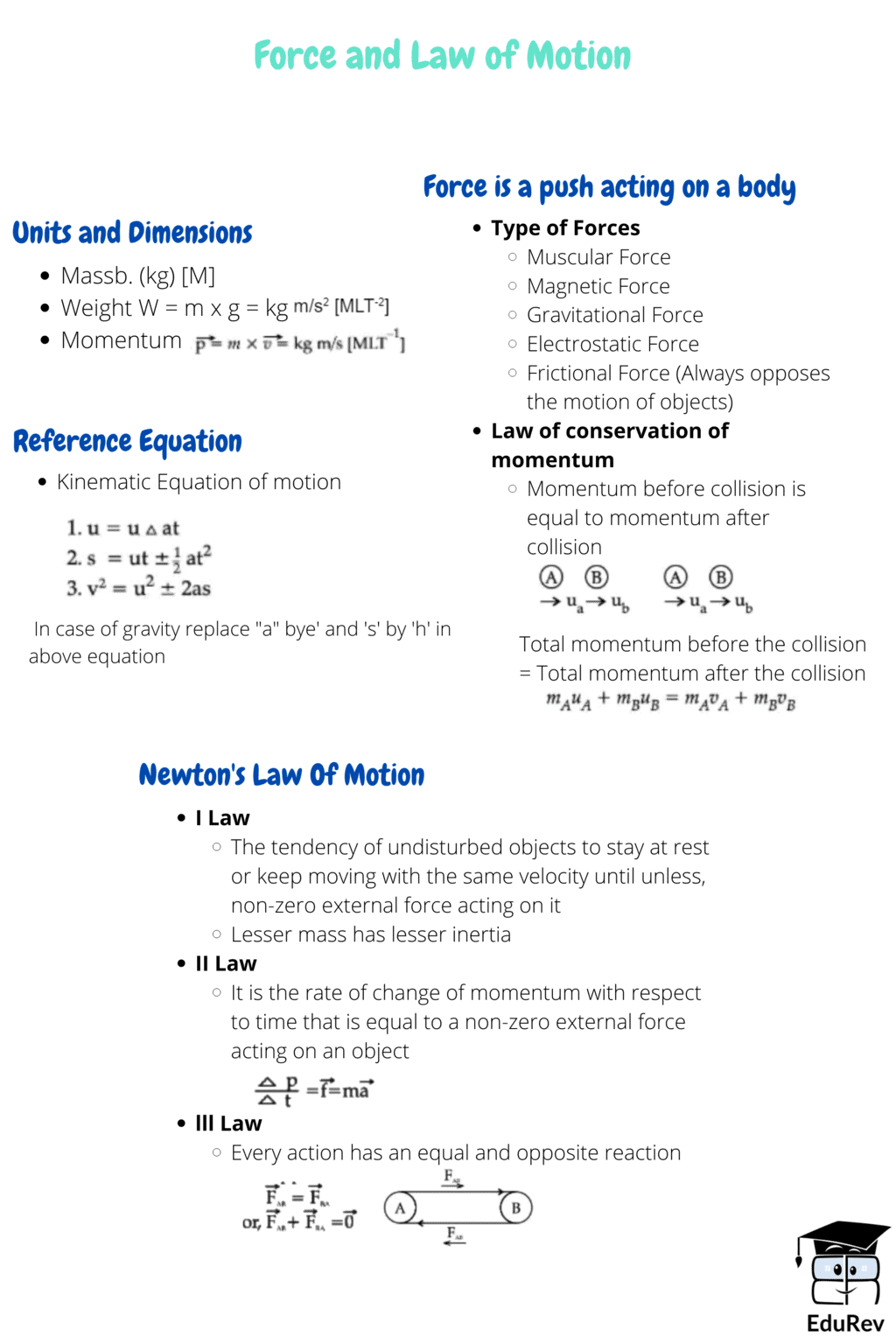Class 9 Exam > Class 9 Notes > Science Class 9 > Mind Map: Force and Laws of Motion
Mind Map: Force and Laws of Motion | Science Class 9 PDF Download

The document Mind Map: Force and Laws of Motion | Science Class 9 is a part of the Class 9 Course Science Class 9.
All you need of Class 9 at this link: Class 9
|
84 videos|478 docs|60 tests
|
FAQs on Mind Map: Force and Laws of Motion - Science Class 9
| 1. What are the three laws of motion? |  |
Ans. The three laws of motion are as follows:
1. Newton's First Law of Motion states that an object at rest will remain at rest and an object in motion will continue to move at a constant velocity unless acted upon by an external force.
2. Newton's Second Law of Motion states that the acceleration of an object is directly proportional to the net force applied to it and inversely proportional to its mass.
3. Newton's Third Law of Motion states that for every action, there is an equal and opposite reaction.
| 2. How does Newton's first law of motion apply to everyday life? |  |
Ans. Newton's first law of motion, also known as the law of inertia, is applicable in numerous everyday life situations. For example:
- When a car suddenly stops, passengers tend to move forward due to their inertia.
- When a cyclist takes a sharp turn, they lean inwards to counteract their inertia and maintain balance.
- When a tablecloth is swiftly pulled from under a set of dishes, the dishes tend to stay in place due to their inertia.
| 3. What is the relationship between force and acceleration according to Newton's second law of motion? |  |
Ans. According to Newton's second law of motion, the relationship between force and acceleration is directly proportional. This means that an increase in force will result in a proportional increase in acceleration, while a decrease in force will lead to a decrease in acceleration. Mathematically, the relationship is expressed as F = ma, where F represents the force, m represents the mass of the object, and a represents the acceleration.
| 4. Can you provide an example of Newton's third law of motion? |  |
Ans. Yes, an example of Newton's third law of motion is when you sit on a chair. When you sit, your body exerts a downward force on the chair, and according to Newton's third law, the chair exerts an equal and opposite force upwards on your body. This upward force from the chair supports your weight, allowing you to remain seated.
| 5. How does inertia affect the motion of objects? |  |
Ans. Inertia is the tendency of an object to resist changes in its state of motion. It affects the motion of objects in various ways:
- Objects at rest tend to stay at rest, and objects in motion tend to keep moving in a straight line at a constant velocity unless acted upon by an external force.
- The greater the mass of an object, the greater its inertia, making it more resistant to changes in motion.
- Inertia can cause objects to continue moving even after the applied force has been removed, such as a hockey puck sliding on the ice.
Related Searches

















